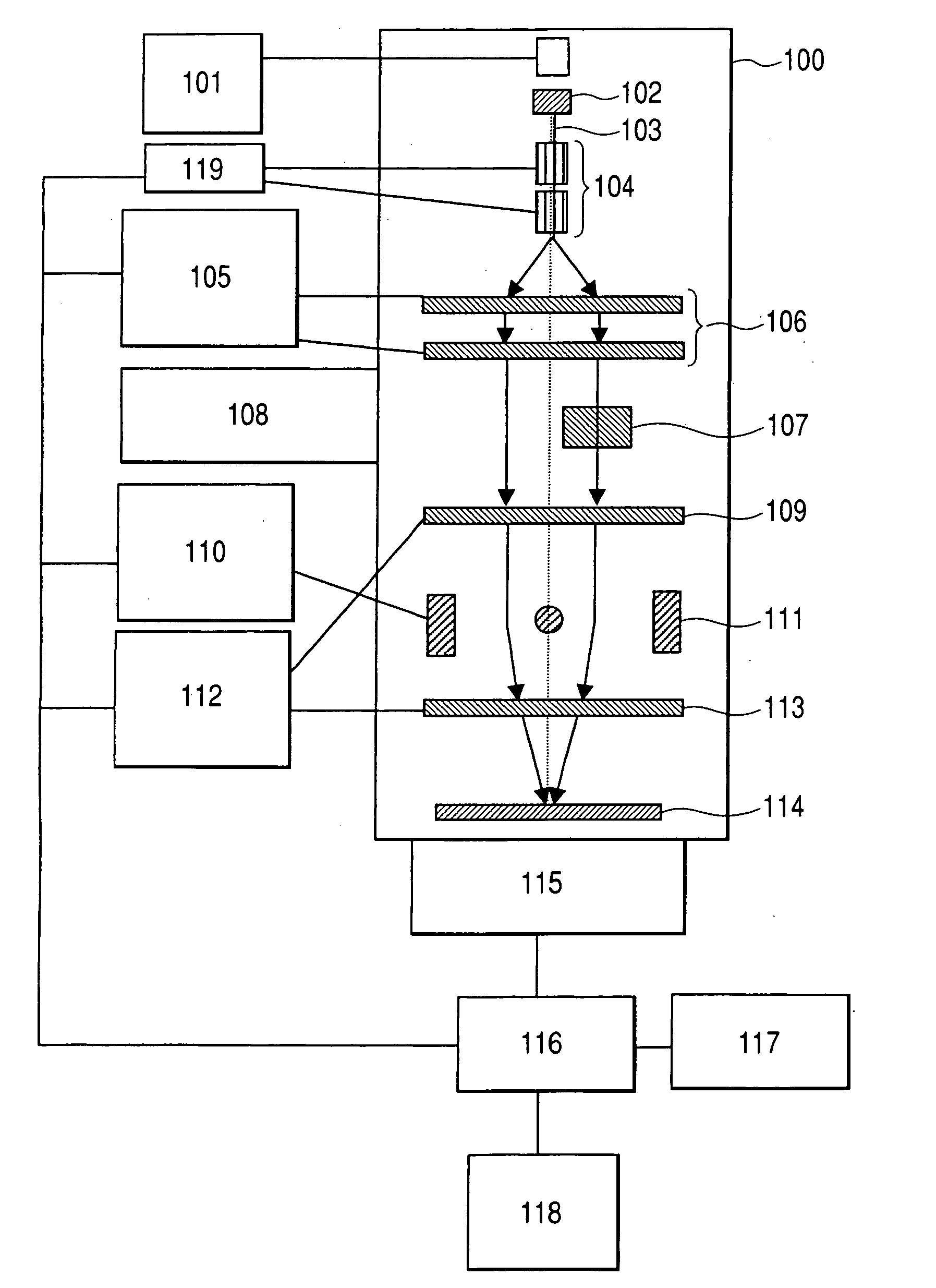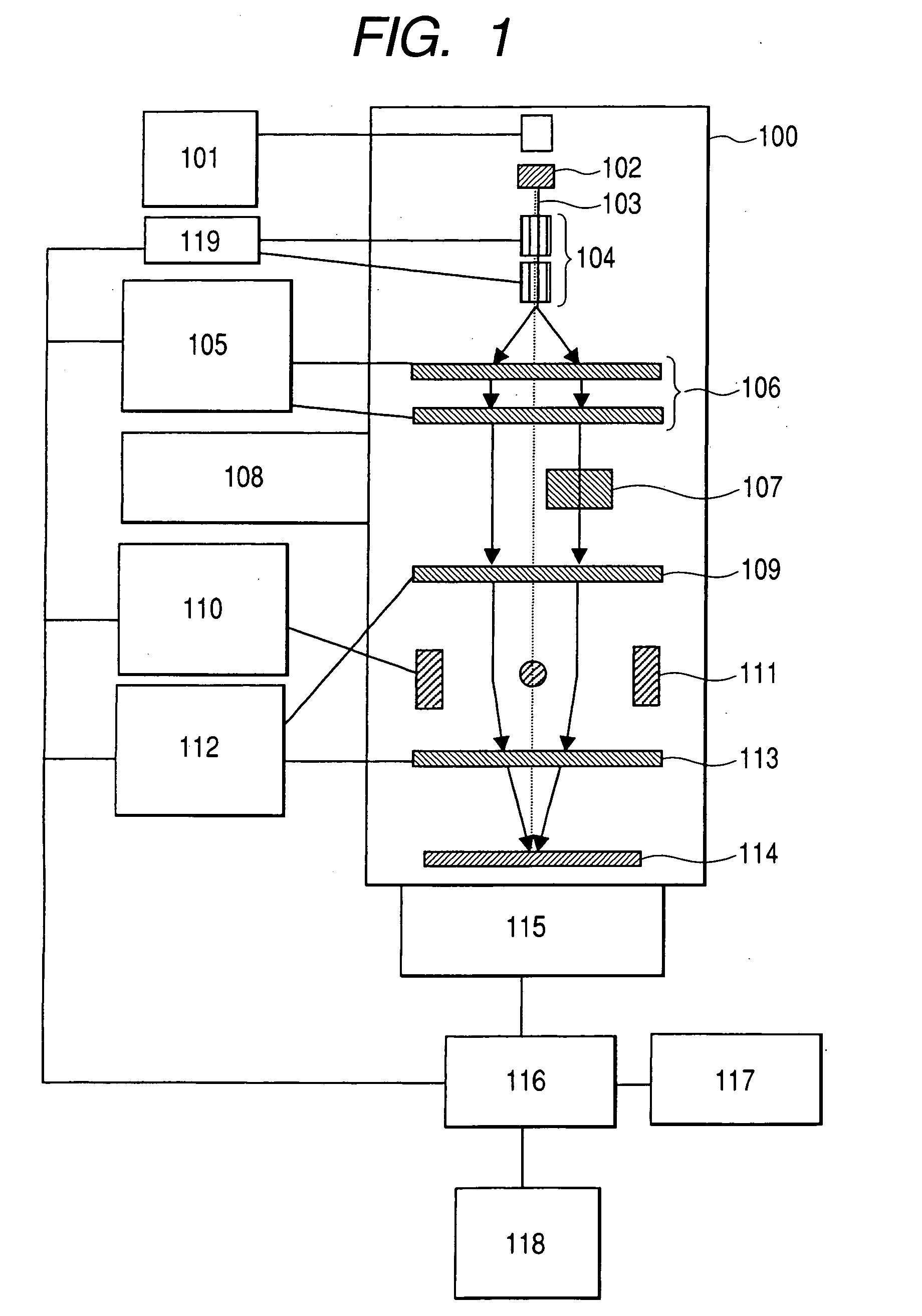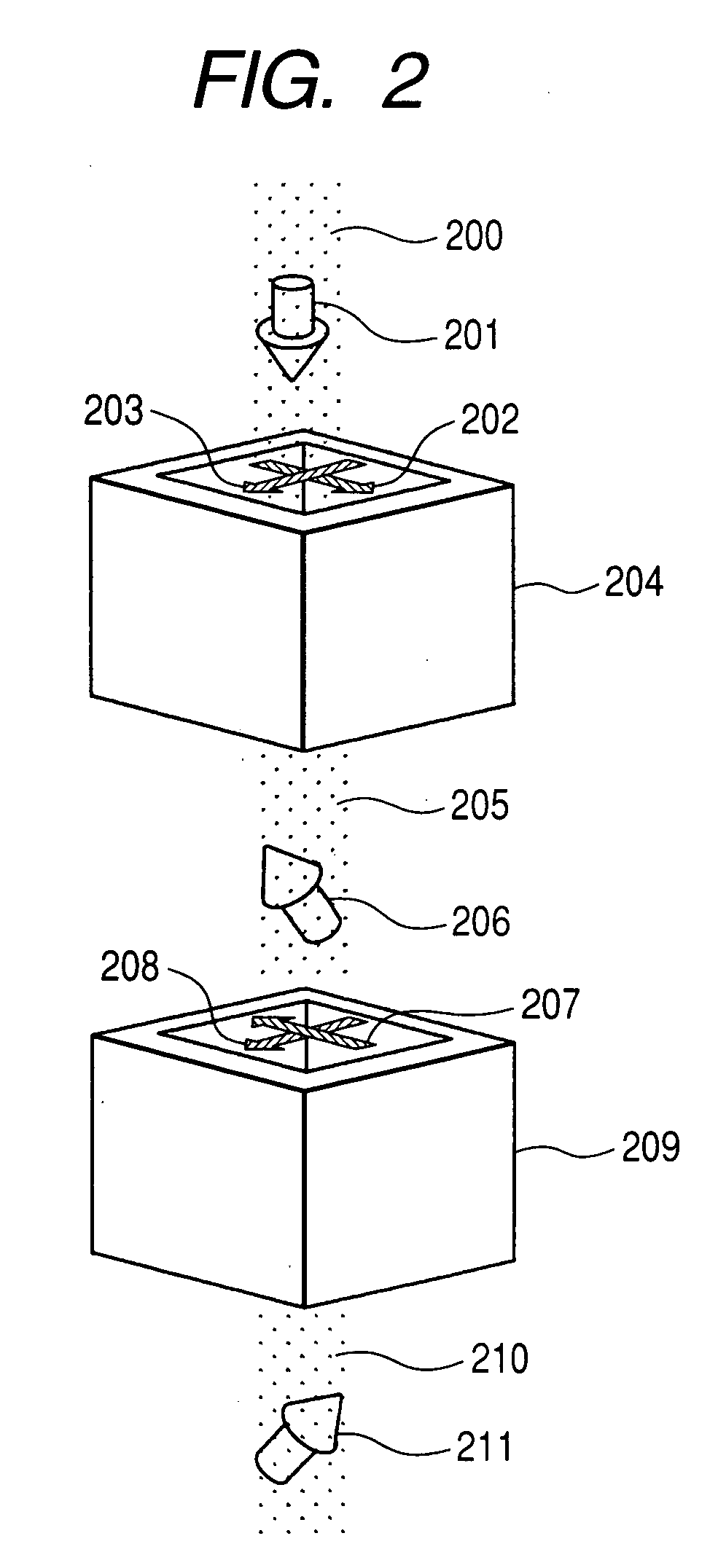Transmission electron microscope
a technology of electron microscope and electron microscope, which is applied in the direction of material analysis using wave/particle radiation, instruments, nuclear engineering, etc., can solve the problems of limited sample size, difficult to map the distribution of protein structure, and single crystals that are difficult to map the molecular structure distribution, etc., and achieve high resolution
- Summary
- Abstract
- Description
- Claims
- Application Information
AI Technical Summary
Benefits of technology
Problems solved by technology
Method used
Image
Examples
first embodiment
[0027]Hereinafter, embodiments of the present invention will be described with reference to the accompanying drawings.
[0028]FIG. 1 shows a rough configuration of a spin-polarized electron beam holography apparatus according to the present invention. The entire apparatus is based on a transmission electron microscope, and is broadly divided into units incorporated in a vacuum chamber 100 and control units etc. in the air. A spin-polarized electron source 102 is controlled by a spin-polarized electron beam controller 101. For example, a type that excites a semiconductor such as GaAs with circularly polarized light may be used as the spin-polarized electron source 102, in which the wavelength of exciting light and the direction of circularly polarized light can be controlled by the spin-polarized electron beam controller 101. Emitted spin-polarized electrons are guided by a spin rotator 104 for adjustment of the angle. The strength of the spin rotator, that is, the magnitude and direct...
PUM
| Property | Measurement | Unit |
|---|---|---|
| crystal grain sizes | aaaaa | aaaaa |
| transmission electron microscope | aaaaa | aaaaa |
| image processing | aaaaa | aaaaa |
Abstract
Description
Claims
Application Information
 Login to View More
Login to View More - R&D
- Intellectual Property
- Life Sciences
- Materials
- Tech Scout
- Unparalleled Data Quality
- Higher Quality Content
- 60% Fewer Hallucinations
Browse by: Latest US Patents, China's latest patents, Technical Efficacy Thesaurus, Application Domain, Technology Topic, Popular Technical Reports.
© 2025 PatSnap. All rights reserved.Legal|Privacy policy|Modern Slavery Act Transparency Statement|Sitemap|About US| Contact US: help@patsnap.com



